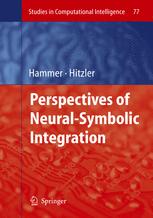

Most ebook files are in PDF format, so you can easily read them using various software such as Foxit Reader or directly on the Google Chrome browser.
Some ebook files are released by publishers in other formats such as .awz, .mobi, .epub, .fb2, etc. You may need to install specific software to read these formats on mobile/PC, such as Calibre.
Please read the tutorial at this link: https://ebookbell.com/faq
We offer FREE conversion to the popular formats you request; however, this may take some time. Therefore, right after payment, please email us, and we will try to provide the service as quickly as possible.
For some exceptional file formats or broken links (if any), please refrain from opening any disputes. Instead, email us first, and we will try to assist within a maximum of 6 hours.
EbookBell Team

4.0
6 reviewsThe human brain possesses the remarkable capability of understanding, interpreting, and producing language, structures, and logic. Unlike their biological counterparts, artificial neural networks do not form such a close liason with symbolic reasoning: logic-based inference mechanisms and statistical machine learning constitute two major and very different paradigms in artificial intelligence with complementary strengths and weaknesses. Modern application scenarios in robotics, bioinformatics, language processing, etc., however require both the efficiency and noise-tolerance of statistical models and the generalization ability and high-level modelling of structural inference meachanisms. A variety of approaches has therefore been proposed for combining the two paradigms.
This carefully edited volume contains state-of-the-art contributions in neural-symbolic integration, covering `loose' coupling by means of structure kernels or recursive models as well as `strong' coupling of logic and neural networks. It brings together a representative selection of results presented by some of the top researchers in the field, covering theoretical foundations, algorithmic design, and state-of-the-art applications in robotics and bioinformatics.